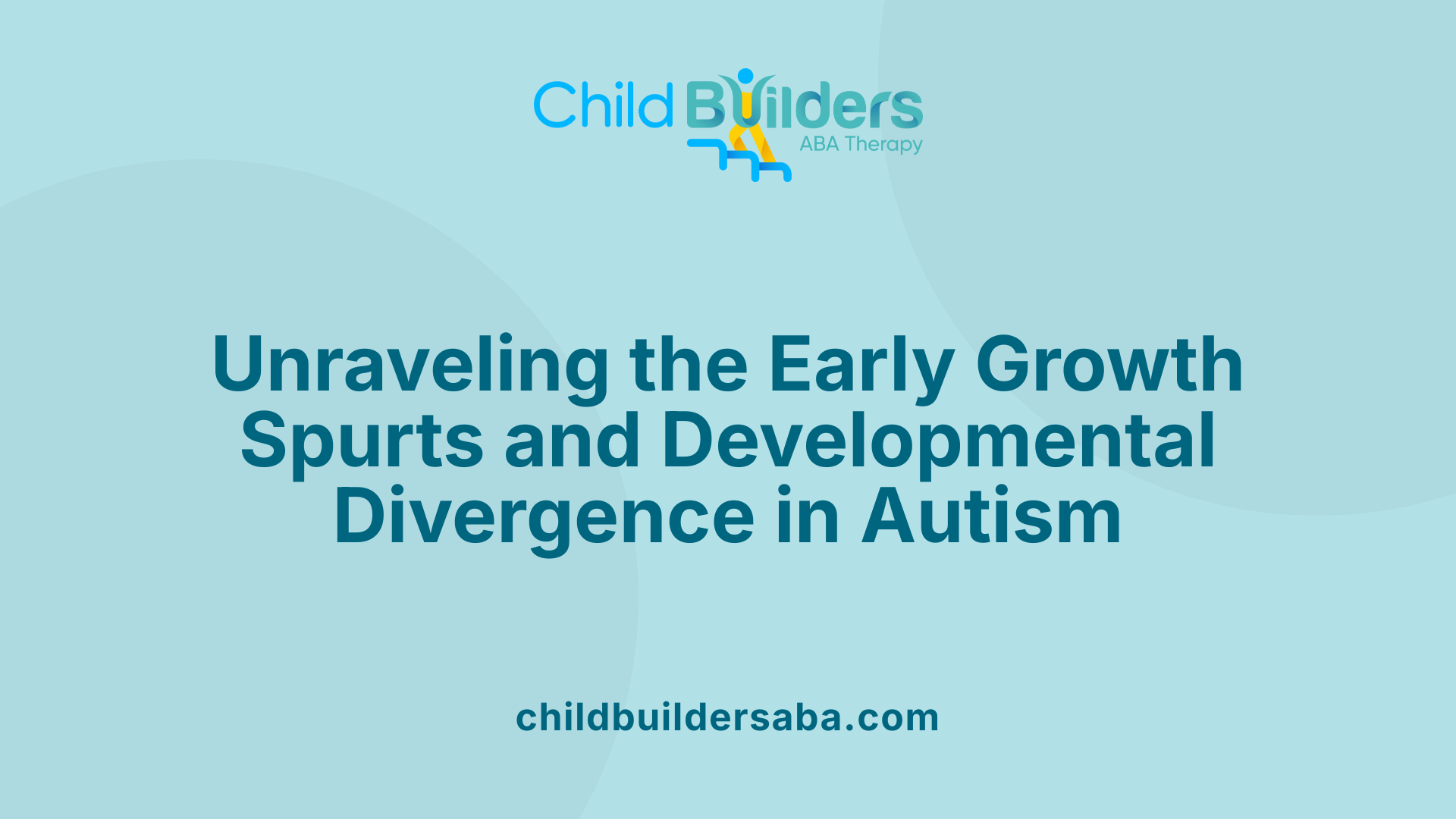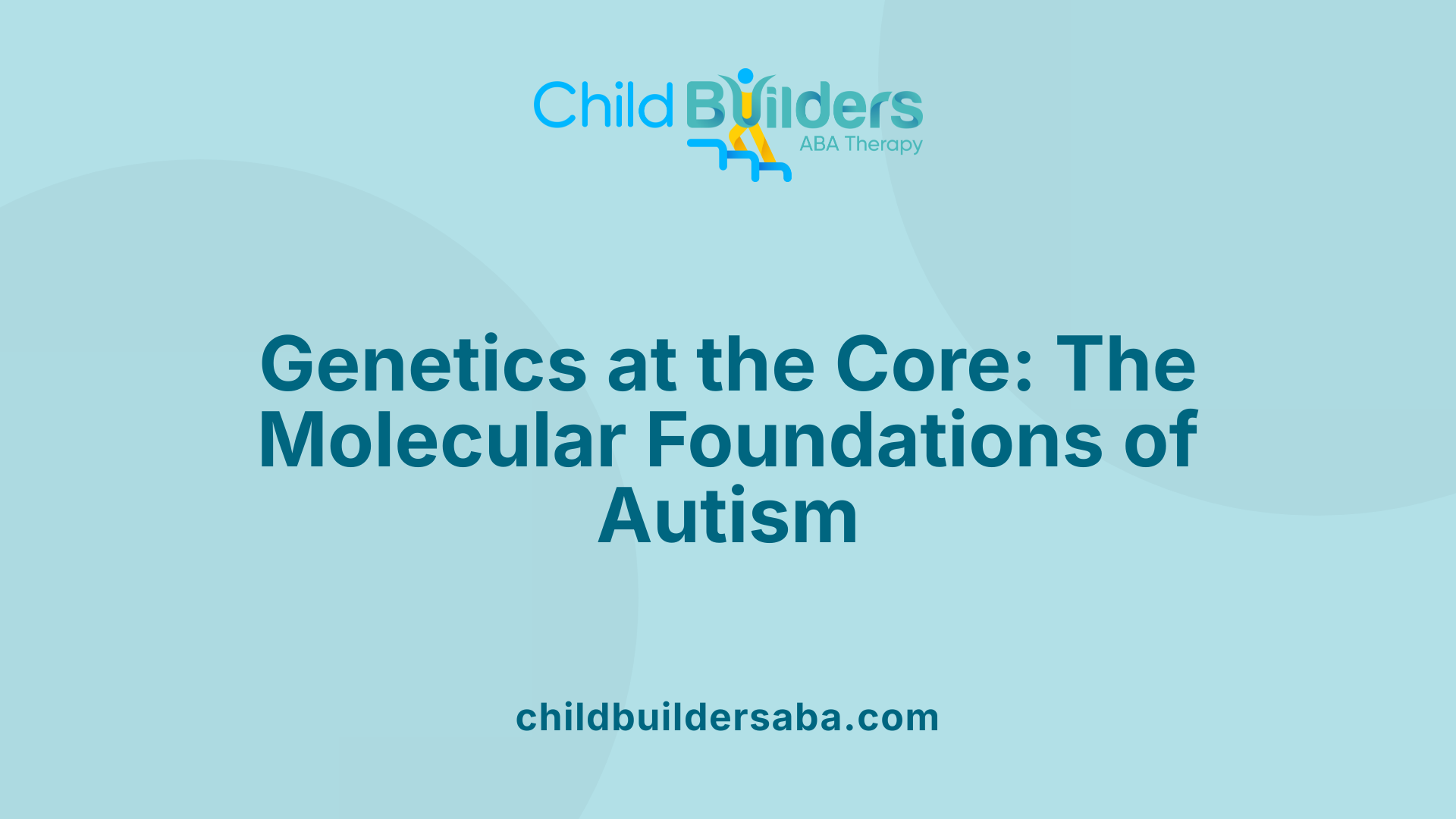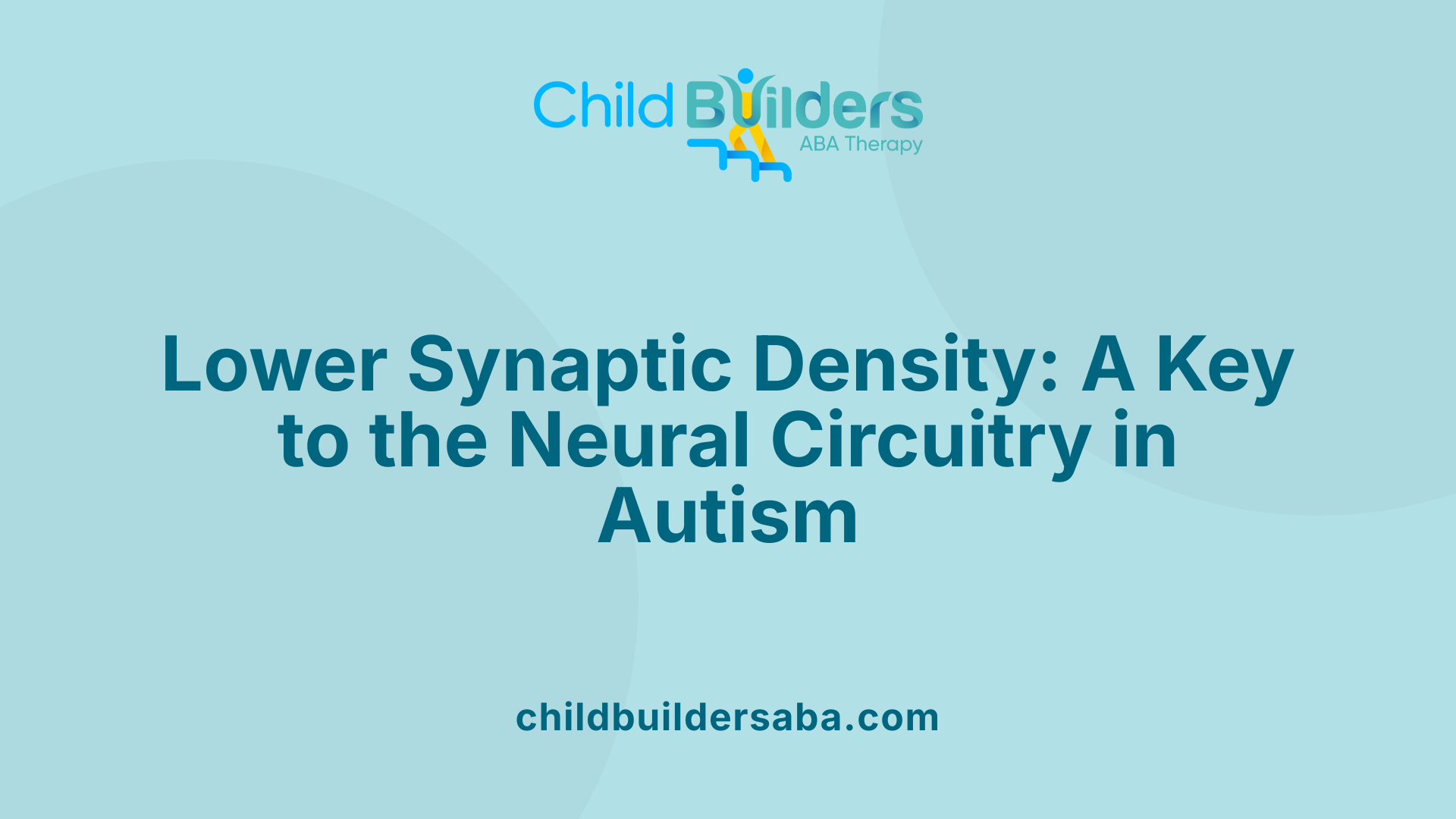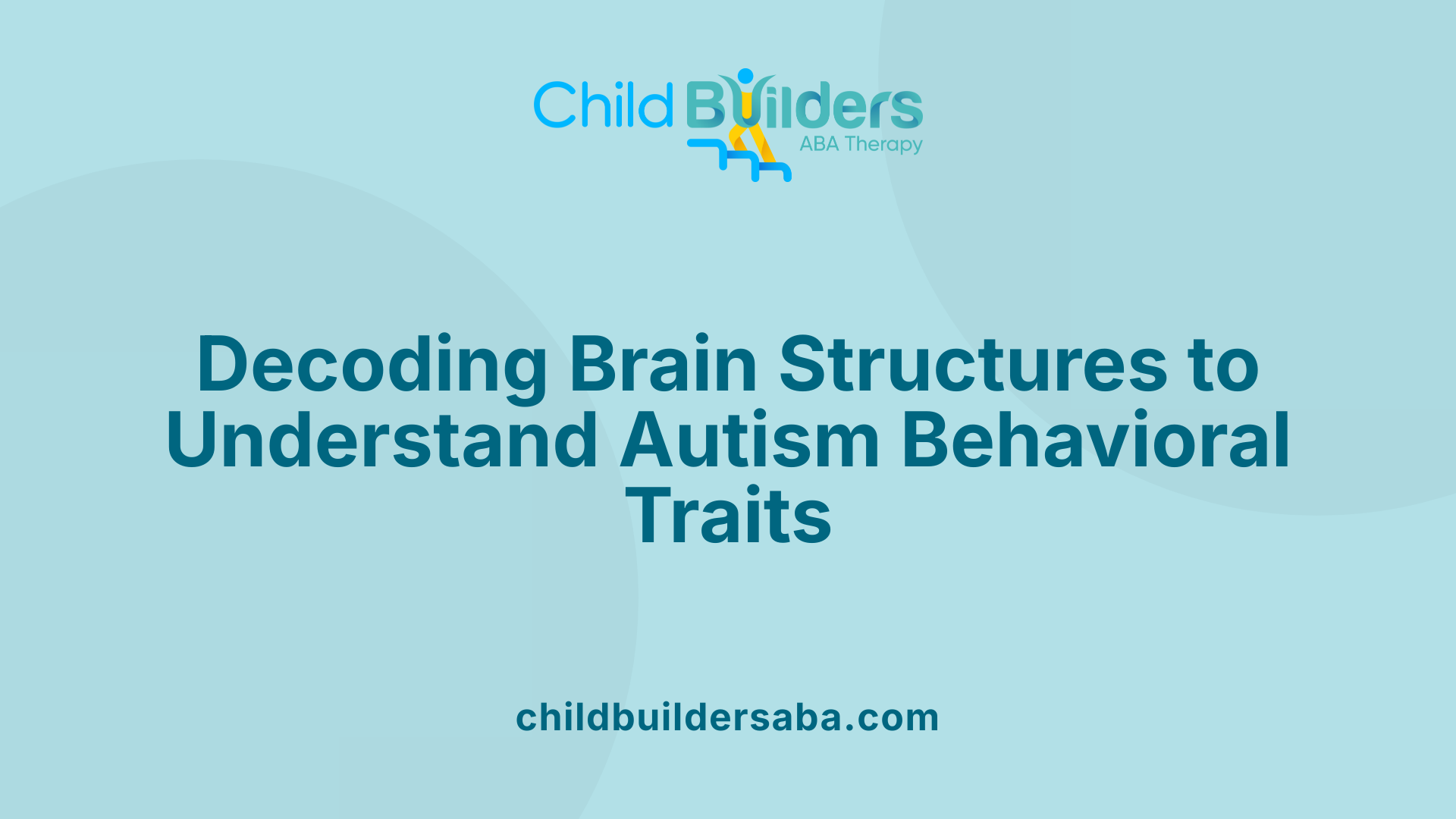Autistic Brain vs Normal Brain

Exploring Core Differences in Brain Structure and Activity between Autistic and Neurotypical Individuals
Understanding how autism affects the brain's physical structure and functional connectivity offers key insights into the behavioral traits and developmental trajectories associated with the disorder. This comprehensive review synthesizes recent findings from neuroimaging, genetic, and postmortem studies, illuminating the complex neurobiological landscape that distinguishes autistic brains from those of neurotypical individuals across the lifespan.
Structural Variations in the Autistic Brain
What are the key neuroanatomical differences observed in the brains of individuals with autism?
Research indicates several distinct neuroanatomical features in the brains of autistic individuals. These differences span across grey matter, white matter, and regional brain volume.
One prominent feature is early brain overgrowth during childhood, particularly in regions like the frontal cortex and amygdala. This rapid growth often results in larger brain sizes during early development, which may normalize or even decrease later in life.
Grey matter volume shows abnormal patterns across multiple regions. For example, increased grey matter density is frequently observed in the frontal lobes, including areas responsible for higher cognitive functions and social processing. Conversely, regions such as the posterior hippocampus and cuneus tend to have reduced grey matter volume.
Structural abnormalities also extend to the limbic system, notably the amygdala and parahippocampal gyrus, which are involved in emotion regulation and social cognition. Variations in cortical thickness across various regions further contribute to the neuroanatomical differences seen in autism.
White matter connectivity is altered too; disruptions in major fiber tracts like the corpus callosum—responsible for interhemispheric communication—are common. These changes can affect how different brain parts communicate, impacting sensory integration and social behavior.
Additionally, these neuroanatomical traits are highly individualized, but collectively they suggest a developmental trajectory that diverges from typical neurodevelopment. Variations in brain surface area and cortical thickness, especially in association and primary sensory areas, underpin many autism features.
In summary, neuroanatomical differences involving increased early brain growth, regional volume variations, cortical thickness alterations, and connectivity disruptions help explain the diverse cognitive, social, and sensory symptoms associated with autism.
| Brain Region | Typical Change in Autism | Implication | Additional Notes |
|---|---|---|---|
| Frontal Cortex | Increased volume, thicker cortex | Affects executive functions and social behavior | Early rapid growth followed by normalization |
| Amygdala | Size varies, sometimes enlarged | Involved in emotional and social processing | Size may fluctuate with age |
| Posterior Hippocampus | Reduced volume | Memory and learning | Changes relate to memory-based behaviors |
| Cuneus | Decreased volume | Visual processing | Impact on sensory processing |
| White Matter Tracts | Disrupted connectivity in key areas | Neural communication | Corpus callosum alterations linked to social and cognitive functions |
This detailed neuroanatomical profile reflects the complex developmental pathways that distinguish autistic brains from neurotypical development, highlighting the importance of personalized approaches in diagnosis and intervention.
Neurodevelopmental Trajectories and Brain Growth Patterns

At what stage does the autistic brain typically develop and stop developing?
Research indicates that the development of the autistic brain follows an unusual pattern from the earliest stages of life. During the first two years, there is often an abnormal acceleration in growth, especially in areas associated with cognition, social interaction, emotion, and language skills.
This rapid overgrowth phase is a hallmark in early childhood, leading to larger brain sizes observed in infants and toddlers who are later diagnosed with autism. However, after this period, typically between ages 2 to 4, brain growth tends to slow down significantly, resulting in a plateau or even a decline in size in some regions.
As children with autism grow older, their brains may experience premature shrinkage in certain areas, which can impact neural connectivity and function. The structural, genetic, and molecular features of the autistic brain continue to change across the lifespan, highlighting a complex developmental journey.
This variable and dynamic process emphasizes that autism involves not only early brain overgrowth but also atypical maturation and subsequent changes. These developmental differences are critical to understanding the timing of interventions and could influence future research on targeted therapies.
In summary, the autistic brain begins its divergent development early, characterized by rapid overgrowth, followed by periods of stagnation or decline, with ongoing structural and functional evolution over time.
Genetic and Molecular Foundations of Brain Differences

What is the estimated impact of genetics on autism based on research?
Research shows that genetics is a major factor in the development of autism spectrum disorder (ASD). Heritability estimates suggest that about 70% to 90% of autism cases can be attributed to genetic influence.
Scientists have identified over 800 genes linked to ASD, along with several genetic syndromes that increase the risk. Notable risk genes include SHANK3, CHD8, and SYNGAP1, all involved in processes like brain development and the formation of neural connections.
Most cases involve genetic variations such as inherited mutations, copy number variations (small deletions or duplications of DNA segments), and polygenic risk factors, which are small effects from many genes working together. Evidence indicates that inherited mutations account for approximately 80% of autism cases.
While environmental factors like prenatal exposures can influence autism risk, the genetic component remains dominant. Ongoing genomic research continues to reveal complex interactions among multiple genes and biological pathways.
Understanding these genetic and molecular foundations aids in deciphering how differences in brain development and connectivity arise in ASD. It also opens pathways for targeted interventions and personalized approaches based on genetic profiles.
| Aspect | Details | Additional Notes |
|---|---|---|
| Heritability | 70–90% | Estimates vary across studies; |
| Key Genes | SHANK3, CHD8, SYNGAP1 | Implicated in neural growth and synaptic function |
| Types of Variations | Mutations, copy number variations, polygenic risk | Contribute to genetic heterogeneity |
| Influence | Brain development, neural connectivity | Affect neural circuit formation in ASD |
| Environmental Role | Modulatory, not primary | Prenatal factors may interact with genetics |
Synaptic Density and Connectivity in Autistic Brains

What is known about the lifespan and health outcomes of individuals with autism?
Individuals with autism typically have a reduced life expectancy compared to the general population. On average, their lifespan ranges from about 39 to 58 years. Various factors contribute to this shorter lifespan, including co-occurring health conditions such as genetic syndromes, neurological issues, mental health problems, and a higher risk of accidents like drowning or injuries due to wandering.
Support levels and access to healthcare significantly influence health outcomes. Those with higher support needs or more severe impairments often face more health challenges and shorter lifespans. Conversely, proper healthcare, safety measures, and targeted interventions can improve long-term health and quality of life. Despite these challenges, many autistic individuals live long, fulfilling lives with appropriate support.
This context makes understanding biological factors, such as synaptic density, vital for developing better diagnostic tools and treatment approaches.
What was discovered about synaptic density in autistic individuals?
A groundbreaking study using PET scans has measured synaptic density—the number of synapses or connections between nerve cells—in living autistic adults for the first time. Synapses are crucial for brain communication, enabling neurons to send signals efficiently.
The study revealed that autistic adults have approximately 17% lower synaptic density across the brain compared to neurotypical individuals. This reduction indicates fewer synaptic connections, potentially affecting how information is processed.
How does synaptic density relate to autistic traits?
Lower synaptic density correlates with more pronounced autistic traits, especially in social communication. This means that the fewer the synapses, the more difficulties individuals may experience in social interaction, communication, and related behaviors.
Reduced synaptic density may contribute to the atypical neural circuitry observed in autism, impacting brain function at a fundamental level.
How does synaptic density influence neural communication?
Synapses serve as the junctions where nerve cells send and receive signals. A higher number of synapses generally facilitate robust brain communication, supporting learning, memory, and social behaviors. Conversely, decreased synaptic density can impair these processes, leading to the characteristic traits of autism.
This research enhances our understanding of the biological underpinnings of autism, opening prospects for targeted therapies aimed at optimizing synaptic connections and improving brain function.
Brain Activity and Connectivity Patterns in Autism

How do brain activity and connectivity in autistic individuals differ from neurotypical individuals?
Autistic brains exhibit distinctive patterns of activity and connection between different regions. Studies using various neuroimaging techniques, especially functional MRI, reveal that autistic individuals often have decreased long-range connectivity, which affects how distant brain areas communicate. Conversely, they tend to show increased short-range or local connectivity, especially in certain brain wave frequencies like delta, theta, and alpha.
This altered connectivity pattern impacts critical functions such as social cognition, language, and sensory processing. For example, the default mode network, involved in social and introspective thought, often shows atypical activity in autism, correlating with social difficulties. Variability exists across studies, influenced by factors like age, specific brain regions examined, and individual differences.
Early in development, some research indicates that connectivity might be heightened, especially in sensory regions, contributing to sensory hypersensitivities common in autism. Over time, however, some connectivity alterations may diminish or reverse, suggesting dynamic changes across the lifespan.
These neural wiring differences are strongly linked with behavioral symptoms, such as repetitive behaviors, social impairments, and sensory sensitivities. The disrupted organization of neural networks underpins many core features of autism and continues to be a focal point for understanding its neurobiological basis.
Neuroanatomical and Functional Signatures of Autism Subtypes

How does the brain structure of autistic individuals relate to behavioral traits?
Autistic brains display distinctive structural characteristics that directly relate to behavioral traits. Reduced synaptic density, approximately 17% lower across the entire brain compared to neurotypical individuals, plays a significant role in behavioral differences. This synaptic reduction is associated with more pronounced social-communication challenges and increased repetitive behaviors. Structural neuroimaging reveals early brain overgrowth in regions like the frontal and temporal lobes during childhood, which later evolves in atypical ways—either normalizing or decreasing—correlating with behavioral severity.
Regional differences also include volumetric variations in key areas such as the amygdala, involved in emotional processing, and the basal ganglia, related to motor and behavioral regulation. Increased folding (gyri and sulci) and altered connectivity patterns—namely decreased long-range and increased short-range connections—impact how information is integrated across different brain regions.
These neuroanatomical differences shape core behavioral features of autism, influencing social interactions, emotional responses, and repetitive behaviors. Understanding these structural variations has boosted the development of diagnostic tools and targeted therapies, helping tailor interventions to individual brain profiles.
Classification of autism into subtypes based on brain patterns
Recent advances have allowed clinicians and researchers to classify autism into four main subgroups based on brain activity patterns and behavioral traits. These subtypes are identified through sophisticated neuroimaging analyses, including machine learning techniques, which analyze large datasets of brain scans.
Each subtype displays unique connectivity and behavioral profiles:
- One subgroup shows hyperactivity in visual processing and salience detection regions, with more severe social impairments.
- Another exhibits weak connections in the same networks, often presenting more repetitive behaviors.
- The remaining two subgroups have pronounced social challenges and repetitive behaviors but differ significantly in verbal abilities and brain connection configurations.
These classifications aid in understanding the heterogeneity of autism, enabling more personalized approaches to intervention.
Machine learning approaches for subtype identification
Researchers have employed machine learning algorithms to analyze neuroimaging data from hundreds of autistic and neurotypical individuals. This approach effectively detects patterns within complex datasets, leading to the identification of subgroups with consistent brain-behavior relationships.
The models include analysis of functional connectivity, gene expression, and protein interactions, providing robust validation of the subtypes across independent datasets.
Utilizing machine learning enhances our comprehension of autism’s neurobiological diversity and supports precision medicine endeavors.
Genetic and protein factors influencing subtypes
Genetic studies reveal that each autism subtype is influenced by distinct genetic variations and protein expression profiles. Genes involved in social behavior, neural development, and immune response—such as those coding for proteins like oxytocin—show differing activity levels among subgroups.
Proteins implicated in synaptic function and neural plasticity act as hubs within gene networks, indicating their central role in defining subtype characteristics.
Understanding these molecular underpinnings helps in developing targeted treatments, offering hope for more effective and personalized therapies for individuals across the autism spectrum.
Bridging the Gap: Towards Personalized Interventions Based on Brain Differences
Understanding the intricate structural and functional differences between autistic and neurotypical brains provides a vital foundation for developing targeted interventions and supports. Advances in neuroimaging, genetic analysis, and molecular neuroscience reveal that autism encompasses a spectrum of neurobiological variations, ranging from early brain overgrowth to altered connectivity and synaptic density. Recognizing these differences across the lifespan—from early developmental overgrowth to adult neural plasticity—can lead to more precise diagnoses and personalized therapies. Future research focusing on longitudinal brain development and molecular mechanisms holds promise for unlocking tailored interventions that can improve quality of life for autistic individuals.
References
- A Key Brain Difference Linked to Autism Is Found for the First Time ...
- Autism Spectrum Disorder: Autistic Brains vs Non ... - HealthCentral
- Neuroimaging in Autism - Brain Development - UCLA Medical School
- The neuroanatomy of autism – a developmental perspective - PMC
- Four Different Autism Subtypes Identified in Brain Study | Newsroom
- Study reveals differences in brain structure for older autistic adults
- UC Davis study uncovers age-related brain differences in autistic ...





.jpg)































































































